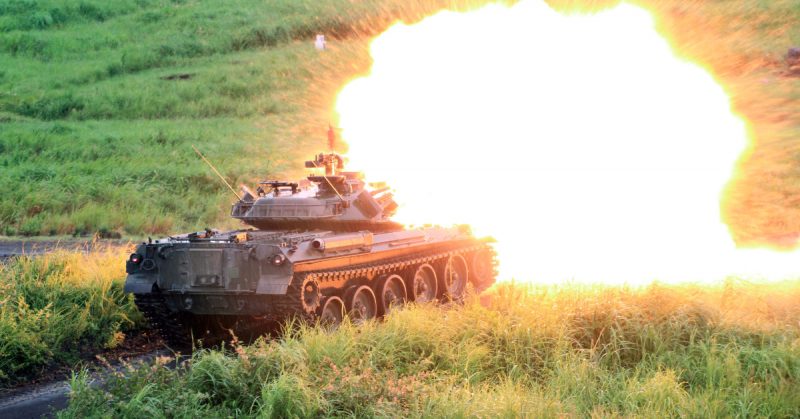Type 89 Medium Tank
During the 1920s, the Japanese tested a variety of foreign tanks. Based on these experiences, they developed their own four man medium tank, the Type 89. Built by Mitsubishi, it entered service in 1934. It carried a main 57mm gun and two 6.5mm machine guns.
The first wave of Type 89s had gasoline powered engines. Experience using them in Manchuria led to a change in approach by adopting an air cooled diesel engine for the revised 89B.
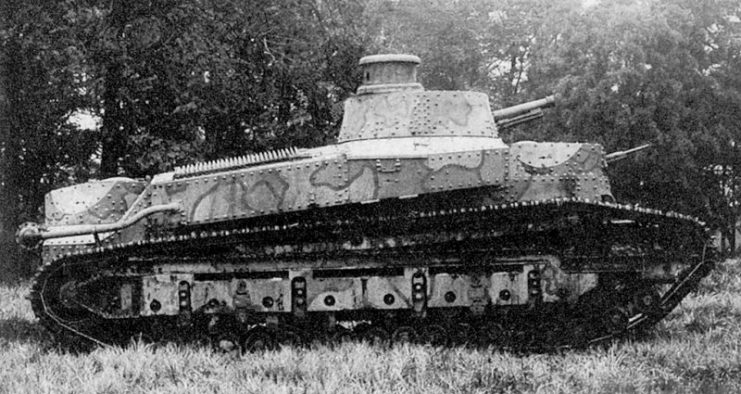
Type 89s fought in the Philippines and China during the early stages of the World War II.
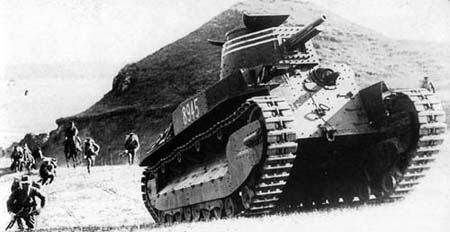
Type 94 Tankette
The Type 89 entered service in the same year as another Japanese tank, the Type 94 Tankette, built by Tokyo Gas & Electric Co. Like many Japanese tanks, it was strongly influenced by vehicles from other countries, in this case, British Carden Loyd machine gun carriers, which Japan had started using in the late 1920s.
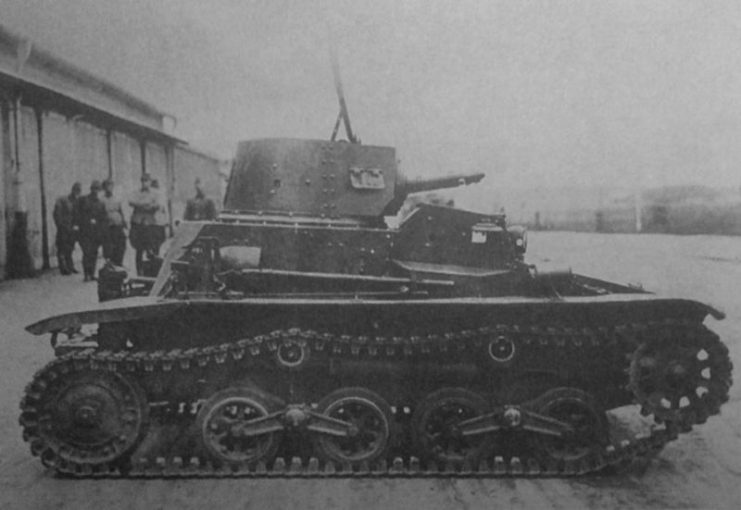
The extremely light Type 94 was not intended as a frontline fighting vehicle. Its main uses were carrying supplies to troops under fire and conducting reconnaissance. The latter task was made trickier because the Type 94 sometimes threw off its tracks when traveling at high speeds.
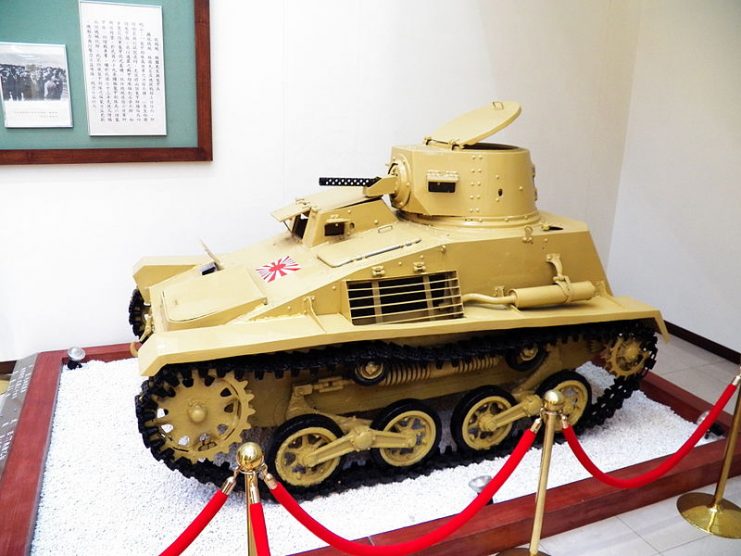
Type 95 Light Tank
Quickly developed and produced by Mitsubishi in 1934-5, the Type 95 was a middle point between the 89 and the 94. It had thicker armor than the tankette but lighter weaponry than the medium tank. It was armed with a 37mm main gun and two machine guns.
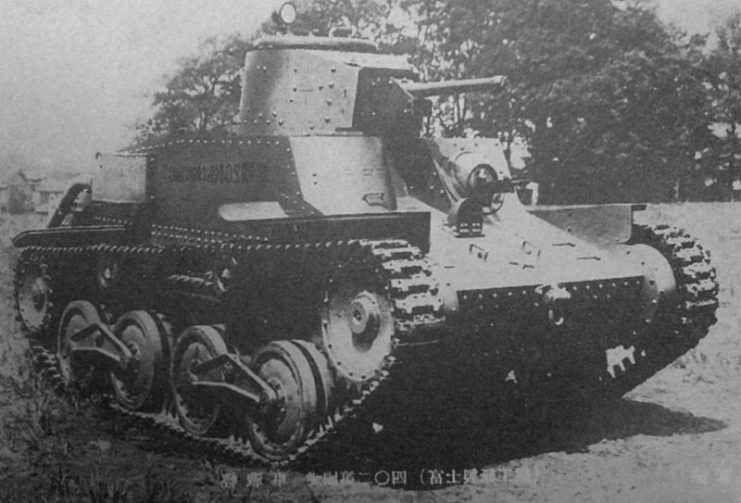
By the time the Second World War broke out, the Type 95 was already obsolete and unable to compete with the latest Allied tanks and anti tank guns. Repeated efforts were made to keep it relevant, installing a series of larger guns and even a different turret. But none of these changes could keep the 1250 Type 95s from becoming obsolete.
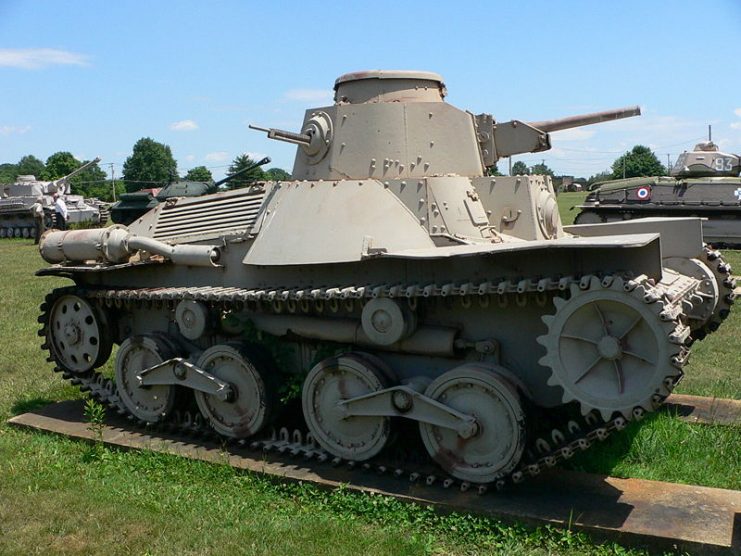
Type 97 Medium Tank
Tank development moved fast in the interwar years, and by 1936, Type 89 was starting to look out of date. The army sought a new alternative. Of the two designs presented, the one from Mitsubishi Heavy Industries won, entering service as the Type 97 in 1937.
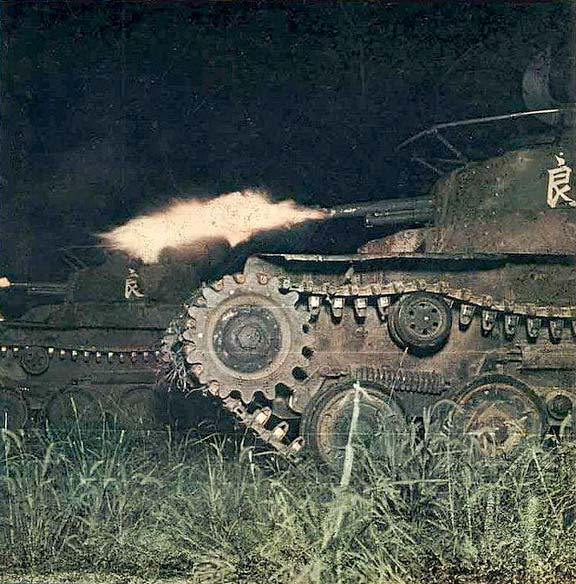
The best Japanese tank of the period, the Type 97 was in many ways an ordinary design with a conventional layout, a four man crew, 57mm main gun, and two machine guns.
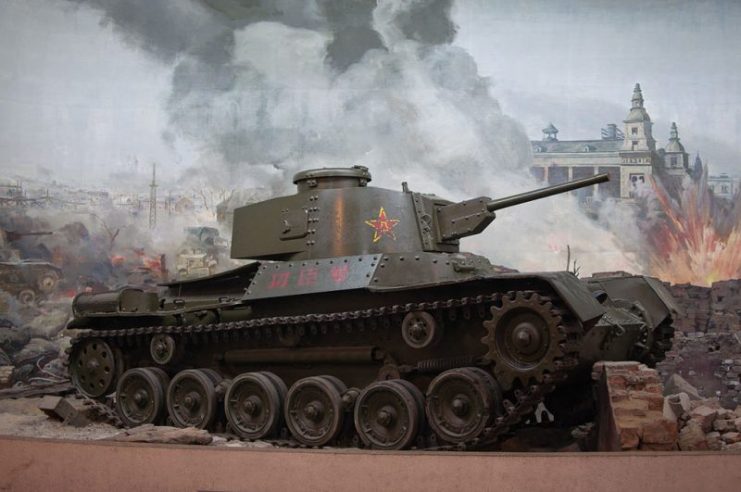
What made the Type 97 exceptional was the unusual mounting of its gun. It was normal for tanks’ guns to be mounted on horizontal trunnions, but the Type 97 also had vertical trunnions. This allowed the gun to be traversed up to 5° separately from the movement of the turret, allowing more precise aiming.
Type 2 Amphibious Tank
The Japanese army was one of the first to take an interest in amphibious tanks. During the late 1920s, they experimented with potential designs, but never put any of them into production.
This changed in 1940 when it was decided that the Marine Corps needed amphibious tanks. The Navy took over and quickly created the Type 2 amphibious tank. Based on the Type 95 light tank, they added a larger waterproof hull, a pair of buoyancy chambers, two propellers and a pair of rudders.
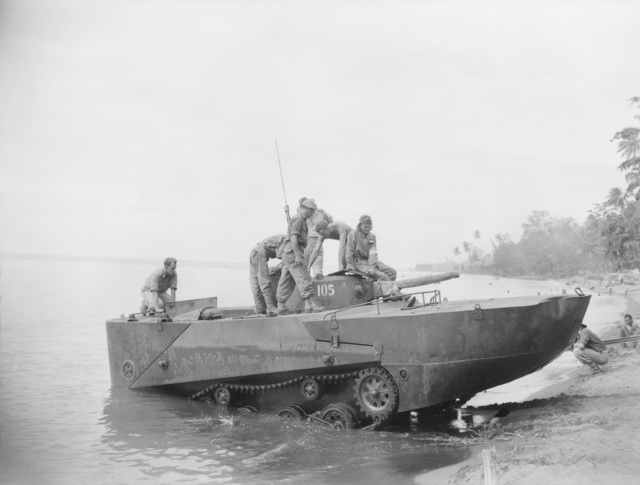
While earlier amphibious designs were created to tackle the waterways of Manchuria, the Type 2 was built for coastal landings. It could be launched a good distance from shore, saving landing craft from having to navigate treacherous reefs, which was one of the biggest challenges for beach landings in the Pacific. Once it reached the shore, the buoyancy chambers could be released from inside the tank, leaving it to act as a normal battle tank.
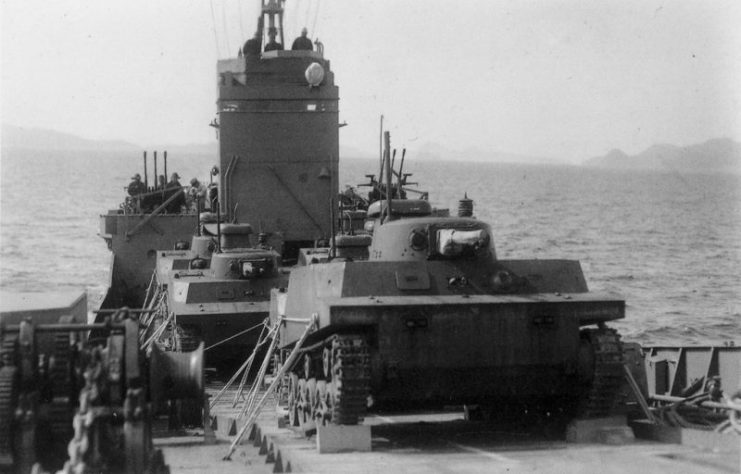
Type 61 Main Battle Tank
When the Japanese Self Defense Force was created in the 1950s, it initially relied on American tanks. This created two problems. One was that Japanese crewmen were, on average, slightly shorter than Americans, making the interior less well designed for them. The other was that American tanks were wider than the Japanese railway loading gauge, causing challenges in transporting them.
To solve these problems, work began in 1954 on designing a homegrown tank. The end result was the Type 61, built by Mitsubishi Heavy Industries.
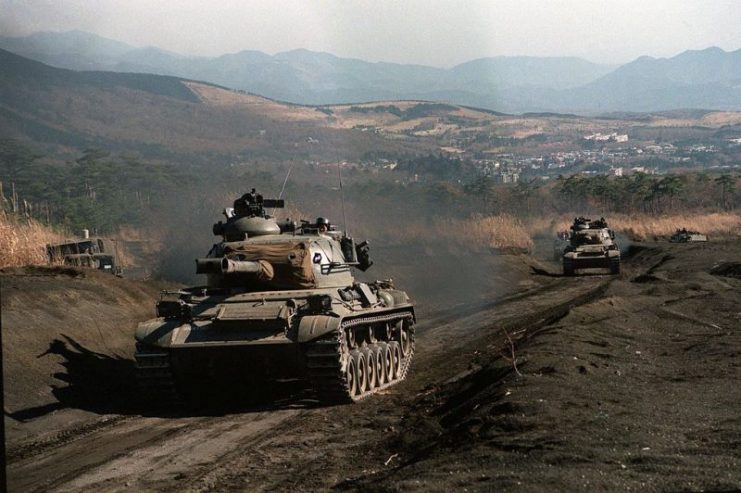
The American influence was still strong with many design features taken from the US M47 tank. The Japanese made 90mm gun was also based on those installed in American tanks, but there were significant differences. The Type 61 was more compact than the tanks it imitated. Like previous Japanese tanks, it used diesel fuel rather than petrol. Ease of maintenance was a high priority in the design.
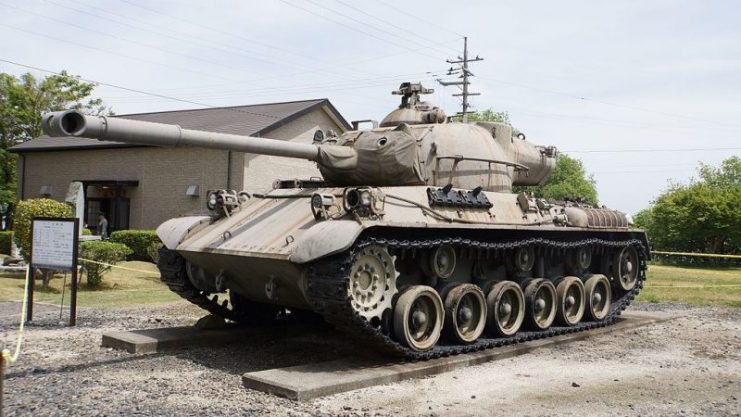
Developing a tank industry from scratch took time, and the type 61 wasn’t issued to the armed forces until 1962. 500 were built.
Type 74 Main Battle Tank
Within a few years of the Type 61 entering service, the Japanese Army began thinking about what would replace it. Given the nearly decade long time to design, develop, and produce the last tank, they needed to get ahead if they were to have something up to date in the 1970s and 1980s. The result was a new tank factory and a new tank, once again the work of Mitsubishi. Production began in 1973.
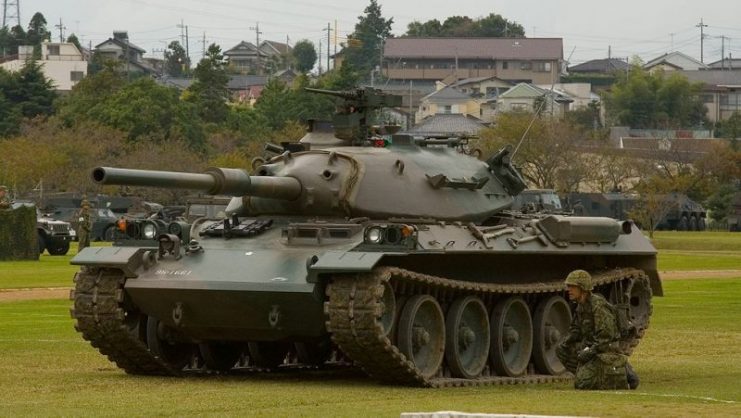
Type 74 was a relatively conventional design, carrying a Japanese built version of the British 105mm L7 gun. The sloping armor of the turret was particularly well designed to deflect hits against it.
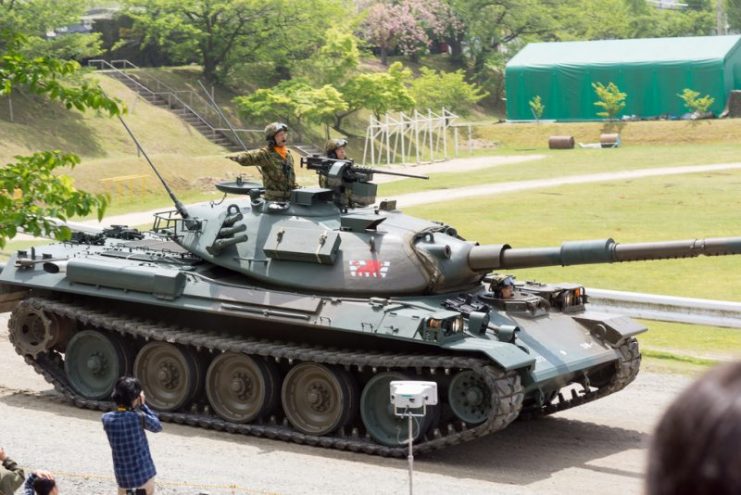
Read another story from us: 6 Soviet Cold War Tanks
One of the Type 74’s key features was its hydro-pneumatic suspension. This could be used to adjust ground clearance, helping the driver to adapt to operating in different terrain. The suspension could also be used to alter the attitude of the tank, helping to lay the gun. Sophisticated fire control systems included a ballistic computer, gun stabilization, and laser range finder.
